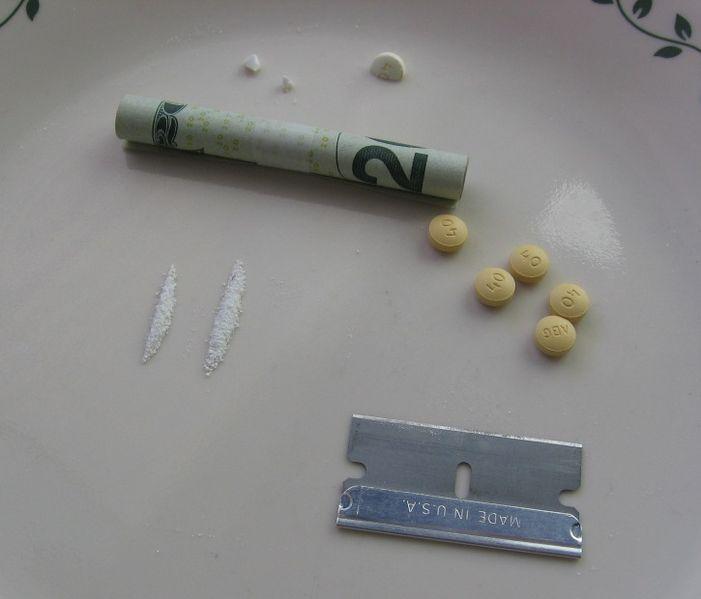Canada’s First Nations communities wrecked by OxyContin addiction
Addicts often crush OxyContin tablets into powder to snort in order to get an immediate high. Notice the tablets at the top with the coating removed. (Photo by 51fifty via Wikimedia Commons, cc-by-sa.)
Some 9,000 residents of Canada’s First Nations communities are estimated to be addicted to OxyContin.
That’s readily apparent in Fort Hope, a small community some three hours by airplane from Toronto in rural Ontario. Dave Waswa, an artist in Fort Hope, carves eagles from moose antlers. They’re valuable to art dealers, but also to Waswa’s drug habit. He can get five or six OxyContin tablets for each carving — each tablet sells in Fort Hope for $400 to $600. In a city like Toronto, an individual tablet can sell for at little as $40.
“It makes everything go away,” Waswa said to the BBC. “You don’t have no feeling. You just want to stay high… But I’m tired of it. I lost a buddy last summer. He was 38 years old and took an overdose, went into a coma and never got up.”
Oxy is a high-powered painkiller that’s supposed to be available by prescription only. It’s supposed to be absorbed by the body over 12 hours, but addicts often smash it and snort it or inject it in order to get the full dose almost instantaneously.
Waswa’s ready to give it up though. There’s a drug that could help him do that, Suboxone, but it’s hard to get. Not only are there just four beds at the Fort Hope detox clinic, but Suboxone isn’t exactly easy to get either. According to Canada’s GlobalNews.ca, just five of 55 patients looking for Suboxone can actually get the prescription. It requires an application, a waiting period and there’s a waiting list as well.
Wanda Sugarhead, a detox counselor, told GlobalNews.ca that the drug is wonderful and is “saving lives.” So that just leaves her crushed when she has to tell people they can’t receive a prescription.
“It’s very frustrating,” she said.
The demand of Suboxone is expected to rise in coming days, weeks and months, because OxyContin is no longer legal in Canada. A replacement drug, OxyNEO is already on the market, but the drug was manufactured with tamper resistance in mind, so it can’t be used by addicts. Doctors expect that this will drive up desire to quit, or turn Oxy users toward harder drugs.
Meanwhile, addicts like Waswa and others among the estimated 80 percent of working adults in Fort Hope who are using Oxy are left waiting for something to change — for a spot in the detox center, for access to Suboxone, or anything that will give them a chance to break the cycle.
